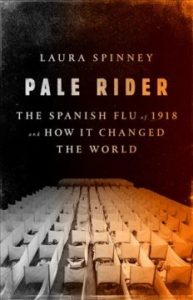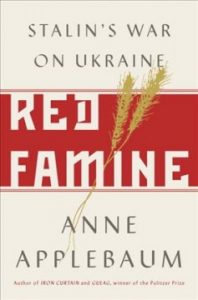And a very happy Free-For-All birthday to the master of the macabre, Edgar Allan Poe!

Poe was born in Boston on this day in 1809, the child of two fairly prominent actors. His father abandoned the family in 1810, leaving Eliza Arnold Poe, a skilled and well-known actress, to raise three children alone. She passed away at the age of twenty-four of what is assumed to be tuberculosis, when Poe was three. The three children were sent to different families to live: William Henry Leonard Poe lived with his paternal grandparents in Baltimore, Edgar Poe was taken in by (but never formally adopted by) John and Frances Allan in Richmond, and Rosalie Poe was adopted by William and Jane Scott Mackenzie in Richmond, Virginia.
 Edgar lived with the Allan family until his late teens, though he clashed with John Allan frequently over money matters. He tried enlisting in the military, and tried college, attending the University of Virginia for a year before leaving (due to lack of funds rather than a lack of intellect or ambition). Falling back on his own resources, Poe began to earn a living through writing, for working for literary journals and periodicals, mostly as a literary critic. Though he developed a name for himself (as a ruthless, curmudgeonly critic who may not have been nice, but was always cynically funny in his reviews), it was the publication of his poem The Raven in 1845 that cemented his reputation. He married Virginia Clemm (pictured at left), his 13-year-old cousin in 1836 (when he was twenty six). Biographers disagree as to the nature of the couple’s relationship. Though their marriage was loving, some biographers suggest they viewed one another more like a brother and sister, but I think it’s very fair to say that this is not a historical issue that can be conveniently swept away and forgotten. Poe’s involvement in several scandals of a romantic nature hurt Virginia extremely, and she passed away in 1847 (also of tuberculosis) blaming the scandals for her poor health. Poe himself was devastated over the loss of his wife, and turned to alcohol to cope with his grief. He managed to battle back against his addictions, continue writing and working, but was found severely ill and delirious in Baltimore in 1849, wearing someone else’s clothing. Though medical treatment was provided for him, he passed away on October 7, 1849. Scholars have suggested a cause of death ranging from alcoholism to rabies, but the real cause will most likely remain a mystery.
Edgar lived with the Allan family until his late teens, though he clashed with John Allan frequently over money matters. He tried enlisting in the military, and tried college, attending the University of Virginia for a year before leaving (due to lack of funds rather than a lack of intellect or ambition). Falling back on his own resources, Poe began to earn a living through writing, for working for literary journals and periodicals, mostly as a literary critic. Though he developed a name for himself (as a ruthless, curmudgeonly critic who may not have been nice, but was always cynically funny in his reviews), it was the publication of his poem The Raven in 1845 that cemented his reputation. He married Virginia Clemm (pictured at left), his 13-year-old cousin in 1836 (when he was twenty six). Biographers disagree as to the nature of the couple’s relationship. Though their marriage was loving, some biographers suggest they viewed one another more like a brother and sister, but I think it’s very fair to say that this is not a historical issue that can be conveniently swept away and forgotten. Poe’s involvement in several scandals of a romantic nature hurt Virginia extremely, and she passed away in 1847 (also of tuberculosis) blaming the scandals for her poor health. Poe himself was devastated over the loss of his wife, and turned to alcohol to cope with his grief. He managed to battle back against his addictions, continue writing and working, but was found severely ill and delirious in Baltimore in 1849, wearing someone else’s clothing. Though medical treatment was provided for him, he passed away on October 7, 1849. Scholars have suggested a cause of death ranging from alcoholism to rabies, but the real cause will most likely remain a mystery.
To read some of Poe’s lyrical and deeply emotional poetry, click here. Additionally, you can come into the Library and check out his stories, which form the basis of the American Gothic literary tradition–and are darned good reads, even today!
And speaking of darned good reads, here are a few of the new books that skipped up onto our shelves this week, and are eager to improve your weekend!

 Pale Rider: Laura Spinney’s newest book is being called a definitive account of the Spanish Flu Epidemic that spread across the globe from 1918 to 1920, and resulted in between 50 and 100 million deaths. The circumstances of the epidemic, and the cultural responses to it, have gone massively understudied in history (overshadowed by the First World War and subsequently international political events). But Spinney shows here that the Spanish Flu did indeed change the world, leading to massive breakthroughs in medicine and epidemiology, changing the role of doctors, nurses, and care-givers around the world, and left a cultural mark that still resonates with us today. Spinney is also a gifted writer, telling her story with gripping suspense, power, and humanity, driving home the cataclysm of this epidemic and the strength of the people who endured it. The book has been at the top of a number of “Best Of” lists, and has earned rave reviews around the world, with The Times noting, “I’ve seldom had so much fun reading about people dying. Laura Spinney, a science journalist, is adept at explaining arcane scientific research in an entertaining, comprehensible way. …With superb investigative skill and a delightfully light-hearted writing style, Spinney extends her analysis far beyond the relatively short duration of the plague….Spinney finds it odd that we know so little about the worst calamity to affect the human race. So do I. There are tens of thousands of books about the First World War, yet that flu is, arguable, more relevant to our world. While global war is, we hope, a thing of the past, global pestilence hovers like a vulture.”
Pale Rider: Laura Spinney’s newest book is being called a definitive account of the Spanish Flu Epidemic that spread across the globe from 1918 to 1920, and resulted in between 50 and 100 million deaths. The circumstances of the epidemic, and the cultural responses to it, have gone massively understudied in history (overshadowed by the First World War and subsequently international political events). But Spinney shows here that the Spanish Flu did indeed change the world, leading to massive breakthroughs in medicine and epidemiology, changing the role of doctors, nurses, and care-givers around the world, and left a cultural mark that still resonates with us today. Spinney is also a gifted writer, telling her story with gripping suspense, power, and humanity, driving home the cataclysm of this epidemic and the strength of the people who endured it. The book has been at the top of a number of “Best Of” lists, and has earned rave reviews around the world, with The Times noting, “I’ve seldom had so much fun reading about people dying. Laura Spinney, a science journalist, is adept at explaining arcane scientific research in an entertaining, comprehensible way. …With superb investigative skill and a delightfully light-hearted writing style, Spinney extends her analysis far beyond the relatively short duration of the plague….Spinney finds it odd that we know so little about the worst calamity to affect the human race. So do I. There are tens of thousands of books about the First World War, yet that flu is, arguable, more relevant to our world. While global war is, we hope, a thing of the past, global pestilence hovers like a vulture.”
The Night Market: Much like Poe himself, Jonathan Moore possess a unique talent for the dark, the twisted, and the macabre. This newest of his mysteries is a gripping and twisted tale that is gruesome and delightfully clever. t’s late Thursday night, and Inspector Ross Carver is at a crime scene in one of the city’s last luxury homes. The dead man on the floor is covered by an unknown substance that’s eating through his skin. Before Carver can identify it, six FBI agents burst in and remove him from the premises. He’s pushed into a disinfectant trailer, forced to drink a liquid that sends him into seizures, and then is shocked unconscious. On Sunday he wakes in his bed to find his neighbor, Mia—who he’s barely ever spoken to—reading aloud to him. He can’t remember the crime scene or how he got home; he has no idea two days have passed. Mia says she saw him being carried into their building by plainclothes police officers, who told her he’d been poisoned. Carver doesn’t really know this woman and has no way of disproving her, but his gut says to keep her close. In a fast-paced story that will keep fans of Blake Crouch and Lauren Beukes delighted, Moore unfolding a mid-bending, Twilight Zone-esque story that earned a starred review from Kirkus, who described it as “A sharp and scary near-future thriller that delivers a dark message about society’s love affair with technology…Unsettling, stylish noir…[The] utterly shocking revelations in the third act are the stuff of nightmares. You’ll never look at a flock of sparrows the same way again.”
 Red Famine: Stalin’s War on Ukraine: Anne Applebaum won a Pulitzer Prize for her history of Stalin’s gulags, and she turns that same sharp historic eye and extraordinary research skills to one of the world’s worst man-made famines. In 1929 Stalin launched his policy of agricultural collectivization—in effect a second Russian revolution—which forced millions of peasants off their land and onto collective farms. The result was a catastrophic famine, the most lethal in European history. At least five million people died between 1931 and 1933 in the USSR. But instead of sending relief the Soviet state made use of the catastrophe to rid itself of a political problem. Anne Applebaum argues that more than three million of those dead were Ukrainians who perished not because they were accidental victims of a bad policy but because the state deliberately set out to kill them. Applebaum proves what has long been suspected: after a series of rebellions unsettled the province, Stalin set out to destroy the Ukrainian peasantry. The state sealed the republic’s borders and seized all available food. Starvation set in rapidly, and people ate anything: grass, tree bark, dogs, corpses. In some cases, they killed one another for food. Harrowing, horrifying, and absolutely necessary, this book is a landmark in Soviet history, and also a deeply personal, moving story about the ability of humans to endure. The Washington Post hailed it as a book sure to become “the standard treatment of one of history’s great political atrocities . . . She re-creates a pastoral world so we can view its destruction. And she rightly insists that the deliberate starvation of the Ukrainian peasants was part of a larger [Soviet] policy against the Ukrainian nation . . . To be sure, Russia is not the Soviet Union, and Russians of today can decide whether they wish to accept a Stalinist version of the past. But to have that choice, they need a sense of the history. This is one more reason to be grateful for this remarkable book.”
Red Famine: Stalin’s War on Ukraine: Anne Applebaum won a Pulitzer Prize for her history of Stalin’s gulags, and she turns that same sharp historic eye and extraordinary research skills to one of the world’s worst man-made famines. In 1929 Stalin launched his policy of agricultural collectivization—in effect a second Russian revolution—which forced millions of peasants off their land and onto collective farms. The result was a catastrophic famine, the most lethal in European history. At least five million people died between 1931 and 1933 in the USSR. But instead of sending relief the Soviet state made use of the catastrophe to rid itself of a political problem. Anne Applebaum argues that more than three million of those dead were Ukrainians who perished not because they were accidental victims of a bad policy but because the state deliberately set out to kill them. Applebaum proves what has long been suspected: after a series of rebellions unsettled the province, Stalin set out to destroy the Ukrainian peasantry. The state sealed the republic’s borders and seized all available food. Starvation set in rapidly, and people ate anything: grass, tree bark, dogs, corpses. In some cases, they killed one another for food. Harrowing, horrifying, and absolutely necessary, this book is a landmark in Soviet history, and also a deeply personal, moving story about the ability of humans to endure. The Washington Post hailed it as a book sure to become “the standard treatment of one of history’s great political atrocities . . . She re-creates a pastoral world so we can view its destruction. And she rightly insists that the deliberate starvation of the Ukrainian peasants was part of a larger [Soviet] policy against the Ukrainian nation . . . To be sure, Russia is not the Soviet Union, and Russians of today can decide whether they wish to accept a Stalinist version of the past. But to have that choice, they need a sense of the history. This is one more reason to be grateful for this remarkable book.”
 A Hundred Small Lessons: A moving, evocative tale that spans generations, Ashley Hay’s newest novel focuses on the power of women, family, and love, to overcome the most profound of obstacles. When Elsie Gormley leaves the Brisbane house in which she has lived for more than sixty years, Lucy Kiss and her family move in, eager to establish their new life. As they settle in, Lucy and her husband Ben struggle to navigate their transformation from adventurous lovers to new parents, taking comfort in memories of their vibrant past as they begin to unearth who their future selves might be. But the house has secrets of its own, and the rooms seem to share recollections of Elsie’s life with Lucy. In her nearby nursing home, Elsie traces the span of her life—the moments she can’t bear to let go and the places to which she dreams of returning. Her beloved former house is at the heart of her memories of marriage, motherhood, love, and death, and the boundary between present and past becomes increasingly porous for both her and Lucy. RT Book Reviews loved this book, saying “Hay truly encapsulates how our lives are interwoven. We are sent on a journey through the decades as small events and echoes of memories overlap, intersect and suddenly converge into a beautiful portrait spanning the past, present and future. Every word has a purpose and resonates…Readers will fall in love with the vivid landscapes of Brisbane and the impeccable, lyrical language that seeps from the pages.”
A Hundred Small Lessons: A moving, evocative tale that spans generations, Ashley Hay’s newest novel focuses on the power of women, family, and love, to overcome the most profound of obstacles. When Elsie Gormley leaves the Brisbane house in which she has lived for more than sixty years, Lucy Kiss and her family move in, eager to establish their new life. As they settle in, Lucy and her husband Ben struggle to navigate their transformation from adventurous lovers to new parents, taking comfort in memories of their vibrant past as they begin to unearth who their future selves might be. But the house has secrets of its own, and the rooms seem to share recollections of Elsie’s life with Lucy. In her nearby nursing home, Elsie traces the span of her life—the moments she can’t bear to let go and the places to which she dreams of returning. Her beloved former house is at the heart of her memories of marriage, motherhood, love, and death, and the boundary between present and past becomes increasingly porous for both her and Lucy. RT Book Reviews loved this book, saying “Hay truly encapsulates how our lives are interwoven. We are sent on a journey through the decades as small events and echoes of memories overlap, intersect and suddenly converge into a beautiful portrait spanning the past, present and future. Every word has a purpose and resonates…Readers will fall in love with the vivid landscapes of Brisbane and the impeccable, lyrical language that seeps from the pages.”
Woman at 1,000 Degrees: Literature has really been giving the elderly and the long-lived their due lately, and this story by Icelandic novelist Hallgrímur Helgason, gives us the newest of our aged heroine, Herra Björnsson. Herra, has two weeks left, maybe three—she has booked her cremation appointment, at a crispy 1,000 degrees, so it won’t be long. But until then she has her cigarettes, a World War II–era weapon, some Facebook friends, and her memories to sustain her. And what a life this remarkable eighty-year-old narrator has led, from her childhood in the remote islands of Iceland, where she was born the granddaughter of Iceland’s first president, to teen years spent living by her wits alone in war-torn Europe, to love affairs on several continents, Herra Björnsson wed and lost husbands, had children, fled a war, kissed a Beatle, weathered the Icelandic financial crash, and mastered the Internet. She has experienced luck and betrayal and upheaval and pain, and—with a bawdy, uncompromising spirit—she has survived it all. A poignant, uproarious, and utterly memorable tale, Helgason’s novel earned a starred review from Publisher’s Weekly, who described it “Helgason’s sad and funny novel begins in 2009, as 80-year-old Herra Björnsson lies dying in a Reykjavík garage, still in possession of a live hand grenade from World War II . . . In her unsentimental, unsparing narrative, she offers insights into Icelandic culture and character, including a riff on reticence and a brief summary of Iceland’s financial meltdown. Like the Icelandic landscape, she can be both appealing and treacherous.”
Until next week, beloved patrons…..Happy Reading!
